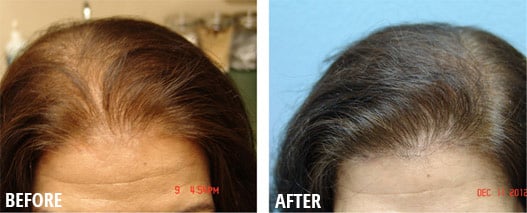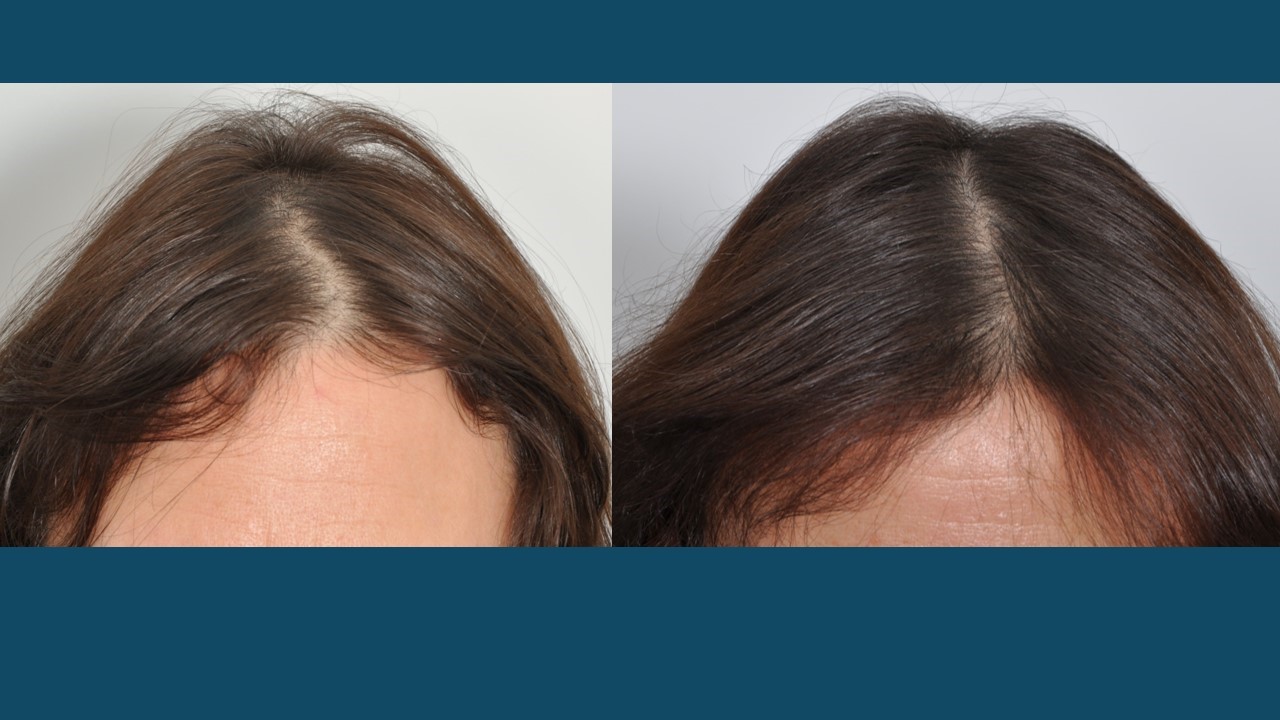Table Of Content

If your levels are normal, taking a supplement can be harmful. For example, if you take too much iron, you can develop iron poisoning. Early signs of this include stomach pain and vomiting.

Medical Professionals
Smoking also increases the production of free radicals. These molecules react with others to cause oxidative stress, which can harm cellular DNA. A 2018 review found that cells in the hair follicles of scalps with hair loss are extremely sensitive to oxidative stress. Ginseng contains certain phytochemicals that may promote hair growth on your scalp. But further research is needed to recommend specific dosages. Some research, including a 2024 review, suggests that there may be a connection between vitamin D deficiency and alopecia.
Best Hair Growth Products for Hair Loss and Thinning in 2024

It leads to cysts on a woman’s ovaries, along with other signs and symptoms, which can include hair loss. Stopping some types of birth control pills can cause a temporary hormonal imbalance. Women who develop a hormonal imbalance can develop thinning hair (or hair loss) on their scalp. Hair usually starts to regrow within months of finishing chemotherapy or radiation treatments to the head or neck. Dermatologists can offer medication to help hair grow back more quickly.
What are the types of hair loss?
If you need treatment for regrowth, the earlier you start, the more likely you are to see regrowth. Studies indicate that laser therapy is safe and painless but requires many treatment sessions. To see a bit of hair growth, you may need several treatments a week for many months. Prescription ketoconazole, 2% (Nizoral) offers another option to treat androgenic alopecia. This medication, which comes in the form of shampoo, is an antifungal agent that may help reduce your body’s production of testosterone and other androgens that lead to hair loss.
While serums work from the outside in, supplements work from the inside out. Ideally, you’ll be able to use both types of products at once for optimal results. We also looked carefully at customer reviews, choosing only products that real customers find useful in their experience. According to the company’s trials, the OLAPLEX intensive hair treatment can make hair three times stronger in just one use.
The women losing hair because of the climate crisis: 'It's everything to us' - The Independent
The women losing hair because of the climate crisis: 'It's everything to us'.
Posted: Thu, 07 Mar 2024 08:00:00 GMT [source]
This likely encourages hair to grow back fuller and speeds up the rate at which lost strands are replaced. It’s available over-the-counter—generically and under the brand name Rogaine—in both 2% and 5% formulations. Recent studies have linked the prolonged use of 5mg finasteride and 0.5mg dutasteride to alarming health complications in men, including hyperglycemia and insulin resistance.
Free Healthbeat Signup
In some circumstances, tretinoin may cause hair loss, so it’s important to only try this medication with guidance from your doctor. Still, a dermatologist or other healthcare professional can offer more guidance on strategies to help minimize hair loss in the meantime. Sometimes hair loss is a sign of a condition called hyperandrogenism, which happens when your body makes too many androgens (male hormones). In women and others with female reproductive organs, its most common cause is polycystic ovary syndrome (PCOS). Along with hair loss, other signs of PCOS include weight gain, acne, and irregular periods.
But when you begin to lose more hair and experience less regrowth, you may notice more significant hair loss. When you see a doctor to see what's causing your hair loss, they’ll probably start with a physical exam and ask about your diet, family history, and medical history. They may ask whether any of your relatives have hair loss. Traction alopecia is a type of hair loss that's brought on by the way you style your hair. Hairstyles like cornrows, braids, or tight ponytails can cause it. Some signs of traction alopecia include hair loss in patches where the hair was pulled and shorter strands of hair near the forehead.
What can women do to prevent hair loss?
The most common cause of hair loss in women is female-patterned baldness (androgenetic alopecia). OTC medications may help reduce hair loss and promote growth. Other types of hair loss may involve treating the underlying cause.
In some cases, the cause of hair loss is obvious — for example, if you're losing hair while going through chemotherapy. Other times, your healthcare provider will need to do some detective work to figure out what’s causing your hair loss. Within a few months of treatment, you may begin to notice less hair loss.
You may need to use the device regularly to see results. Skip tight braids or ponytails that may pull on your hair at the root and potentially lead to excessive shedding. You can find daily multivitamins at most grocery stores or drugstores or ask your doctor to prescribe one for you. It’s unlikely that you’ll get too much vitamin A from dietary sources. So, fill your plate with foods rich in vitamin A, such as sweet potatoes, sweet peppers, and spinach. Most of us shed hair a little at a time — pretty much all the time.
Regular pulling on your hair via tight ponytails, braids, extensions, or weaves can cause traction alopecia—shedding caused by persistent tension, per the AAD. “The most common treatment for telogen effluvium is removing the trigger if it can be identified—and also time,” Dr. Lo Sicco says. Scalp ringworm, which is caused by a fungus, requires antifungal medication. Losing your hair — whether the hair loss is temporary or permanent — can be emotionally difficult for many people.
If you can, avoid heat styling tools such as curling or straightening irons, which may also damage or break the hair shaft. In the meantime, talk with your doctor before adding ginseng supplements to your diet. Hormonal imbalances before, during and after menopause can lead to more permanent hair loss, Dr. Simpson says. Not getting enough iron, protein or vitamin B12 in your diet can also cause your hair to thin.
Doctors often prescribe oral medications to be used along with topical minoxidil because studies show the combination boosts hair production. Low-dose oral minoxidil (prescribed off-label) has been found to be effective and safe for most patients, Mirmirani says. Other oft-used drugs include finasteride (Propecia) and spironolactone. Depending on what’s causing your hair loss, it may be temporary or permanent. Treatments can help people with certain types of hair loss.
Which Hair Growth Products Are Worth Using? - Health Hive
Which Hair Growth Products Are Worth Using?.
Posted: Wed, 21 Feb 2024 08:00:00 GMT [source]
There is also evidence to suggest that sexual dysfunction is another adverse effect of men taking these medications, according to a 2019 study. Additionally, due to the risk of causing birth defects, people who can get pregnant should not take finasteride or dutasteride, Agbai emphasizes. Both men and women develop this type of hair loss, which is the most common cause of hair loss worldwide. Regardless of whether it develops in a man or women, the medical term is androgenic alopecia. Regrowth continues for over a year, after which time it stabilizes. Minoxidil usually needs to be used long-term to prevent hair loss and promote hair growth.
You might be able to prevent some hair loss by eating nutritious foods that provide necessary nutrients (like vitamins, minerals and protein) or adding vitamins to your daily routine. When looking for effective hair regrowth products, consider the ingredient and if those ingredients have been clinically proven to help regrow or thicken hair. Minoxidil is thought to work by partially enlarging hair follicles and lengthening the hair’s growth phase.


No comments:
Post a Comment